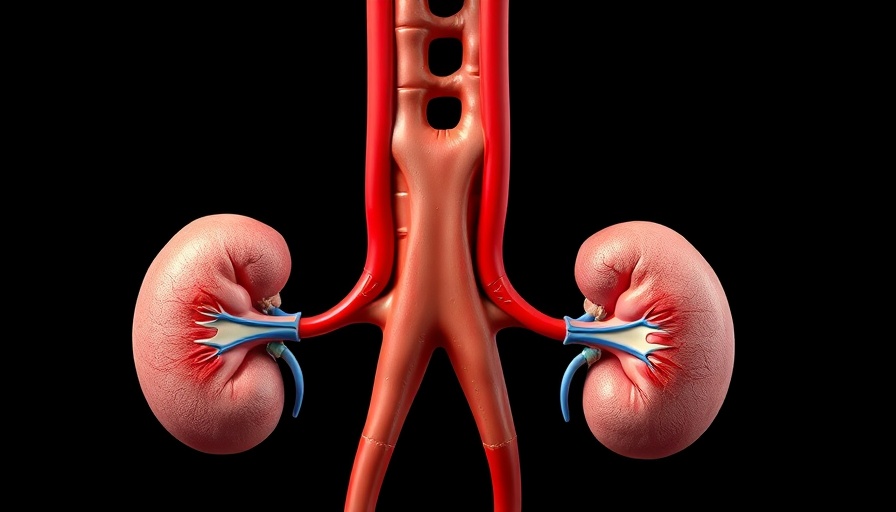
Understanding Primary Adrenal Insufficiency: A Life-Changing Condition
Primary adrenal insufficiency is a devastating disease that impacts the body's ability to produce hormones critical for health and survival. Most commonly caused by Addison's disease or congenital adrenal hyperplasia, this condition poses severe health risks. Without sufficient levels of hormones like cortisol, patients can face debilitating symptoms and complications that require lifelong management through hormone replacement therapies. However, current treatments often fall short, failing to replicate the body's natural hormone rhythms and presenting a significant treatment burden.
Breakthroughs in Adrenal Hormone Restoration
Recent advancements from Aspect Biosystems present a promising solution: an implantable cell therapy known as Bioprinted Tissue Therapeutics (BTTs). Presented at the ENDO 2025 meeting by Sam Wadsworth, Ph.D., this revolutionary approach showed impressive results in animal studies. The therapy enabled mice, whose adrenal glands had been surgically removed, to achieve a consistent and natural release of cortisol after the implantation of the BTTs. Remarkably, the secretion of cortisol followed a circadian rhythm, mirroring the body's natural hormone cycle.
How the Therapy Works and Its Potential Impact
The research indicates that the BTTs can respond to adrenocorticotropic hormone (ACTH), which is crucial for cortisol production in the body. In the experiment, mice implanted with these bioprinted tissues demonstrated not only elevated cortisol levels but also improved survival rates over a six-month period, in stark contrast to those using cell-free implants. This pivotal finding suggests that BTTs could move toward becoming a functional cure for primary adrenal insufficiency, significantly transforming the lives of affected individuals.
The Broader Implications of Hormonal Treatments in Medicine
The potential of this innovative therapy extends beyond adrenal insufficiency alone. It opens avenues for how regenerative medicine can address various endocrine disorders—conditions where traditional treatments have been difficult or insufficient. The ability to produce and regulate hormones through bioprinted tissues could pave the way for similar treatments for other hormone-related diseases, enhancing quality of life for many patients.
Future Directions: What Lies Ahead?
As research advances, patients and healthcare practitioners eagerly anticipate clinical trials that could further validate the safety and efficacy of BTT therapies in humans. Ensuring that these therapies are not only effective but also accessible is crucial. Challenges remain, including regulatory hurdles and the need for ethical considerations in bioprinting living tissues. Nevertheless, as these technologies evolve, they can significantly impact healthcare solutions for underserved conditions, contributing to a brighter future in medicine.
Actionable Insights for Patients and Caregivers
For patients currently managing primary adrenal insufficiency, staying informed about emerging therapies and participating in clinical trials can be paramount. Engaging with healthcare providers about new options and advocating for innovative treatments can enhance treatment strategies and improve overall quality of life.
This exciting research not only signifies a giant leap forward for adrenal insufficiency treatments but represents the broader promise of technology in healthcare—offering hope to many. As advancements unfold, monitoring efforts from organizations like Aspect Biosystems will be critical, and keeping abreast of new developments could change lives for the better.
 Add Row
Add Row  Add
Add 




Write A Comment